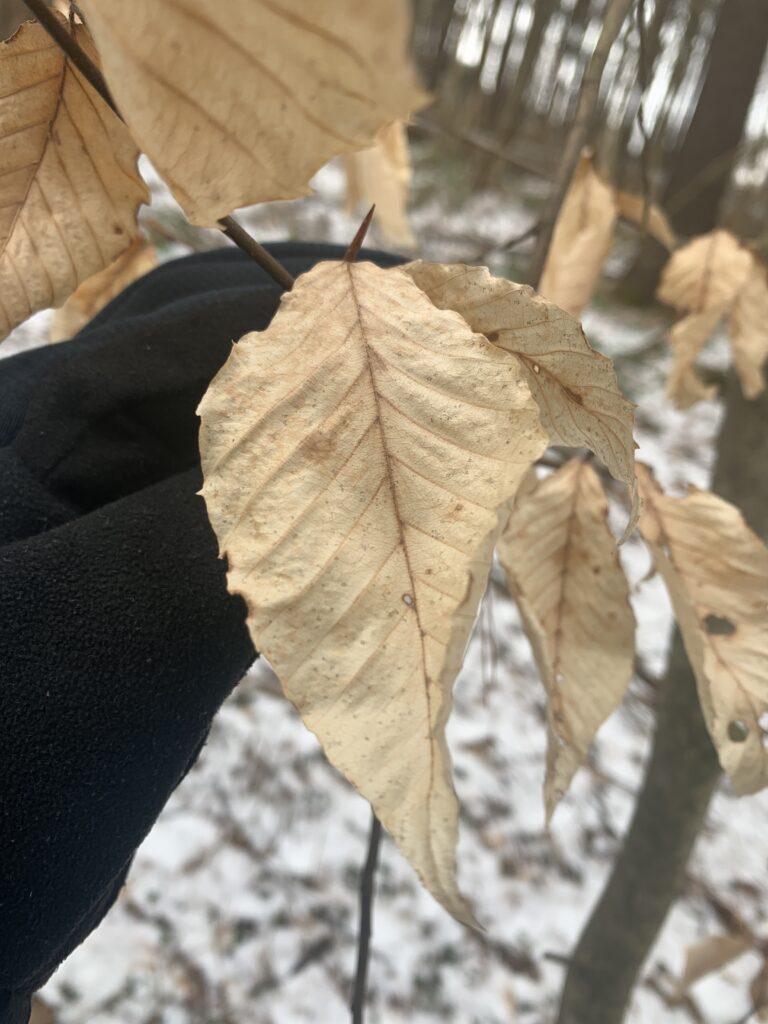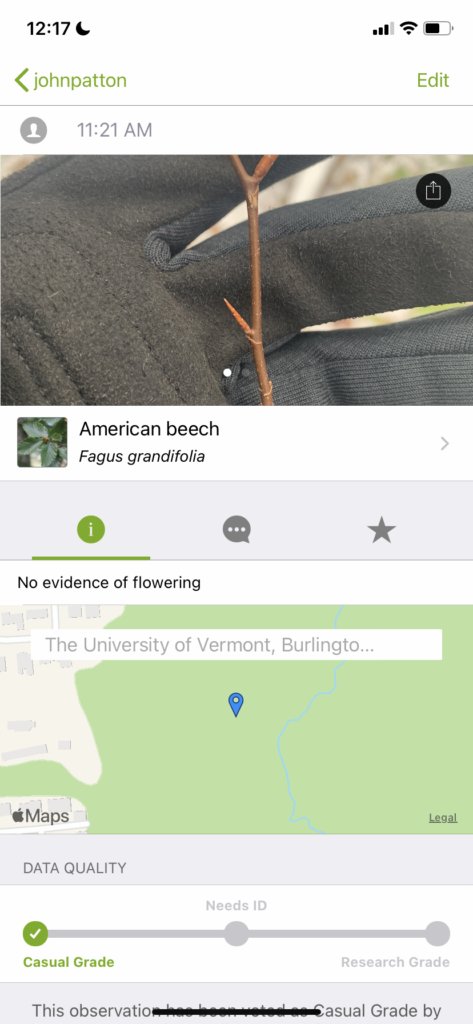On a brisk sunday afternoon, I made my way to my phenology site to see if I could identify an American Beech, and distinguish it from similar trees, like maples. I slipped and slid down the icy paths until I reached my snowy and slushy phenology site. From there, I spotted a young American Beech, no more than a few years old. How, you may ask? Well, it was obvious because the beech I was looking at displayed marcescence, or the tendency to retain leaves in the winter. As you can see from the photo below, there were many pale yellow leaves still attached to the tree.

This was actually the first hint that allowed me to distinguish between this American Beech, and other species of tree nearby, especially Sugar Maple. This marcescence not only is indicative of a certain kind of tree like Oak and Beech, effectively ruling out a maple, but the presence of leaves allowed me to compare the tree with a maple leaf. It was clear that the pinnate leaf, with alternating veins that led to pointed ends, was a completely different shape than that of a maple leaf, which is palmate in nature.
However, it wasn’t just the presence of a few dead leaves that led me to distinguish the specimen of American Beech I was looking at from other trees, as I also examined the buds on the ends of twigs.

Looking at the twig of an American Beech, there are a few identifiers that can help seperate it from a maple tree. For example, the buds and branches of the American Beech are in an alternate pattern, while the branching of a maple exists in an opposite pattern. Additionally, the buds themselves are quite different. The buds of the American Beech are long, narrow, and scaled, whereas the buds of a maple are smooth and small. Overall, between the distinction in leafand bud shape, I was confident that I had identified an American Beech. Then it was time for INaturalist! I used 2 photos, one of the buds and one of the leaf, to identify the American Beech on the INaturalist website, and wrote in the description that there was no evidence of flowering (it was clear that the tree was dormant for the winter). Then, I submitted it with my geolocation so that everyone could see where I went in Centennial Woods!

After successfully uploading my post, I walked back out through Centennial Woods, satisfied with my identification work and excited to return to the spot in just over a month’s time for our next assignment!
